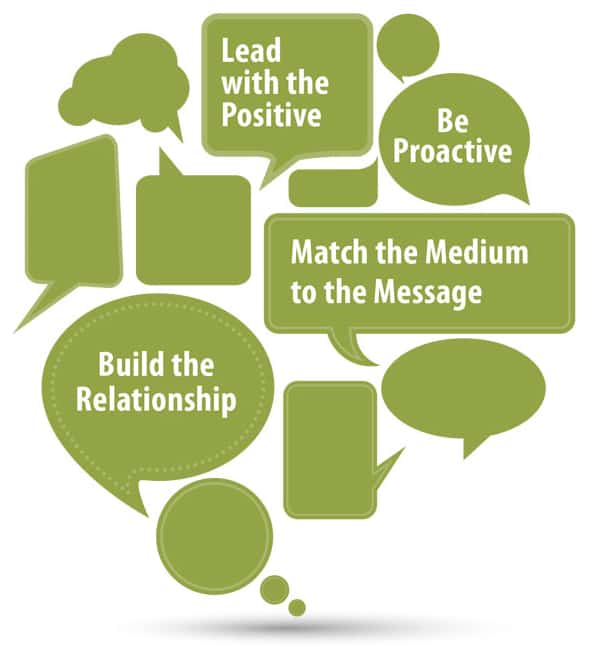Communication is king. With your significant other, children, co-workers, boss or clients, it’s the link that helps people understand what you think, feel, want, and do. But all too often, communication fails; not because of what you said, but because you failed to package it for successful delivery.
Just as agreeing to do a task with crossed arms and a scowl on your face doesn’t exactly give the other person confidence that you’ll do it well, how you package what you intend to communicate (tone, communication method, and non-verbal cues) can make or break the message. How we communicate often reflects our values, and in the workplace, our culture, so being intentional about how communication works at your office is just as important as refilling the keg and breaking out the ping pong table (despite which activities tend to get more airtime).
Thankfully, at Perkins, we have four communication values to guide our internal and external communications.
- Be Proactive – Leave surprises for birthdays. Most messages are more meaningful when they give someone time to consider, plan, and prepare. And boy, does it make you look good to provide an update before being asked to do so.
- Lead with the Positive – As much as we try to avoid it, often what we deal with at work involves issues, changes and other stressful activities. There is hardly an overabundance of kindness and positivity in this world so strive to lead with it. See how that changes your conversations, you, and the receptivity of others to your requests.
- Build the Relationship – Maybe you both like soccer, or love craft beer; maybe your client just had a birthday or lost a loved one. Remembering to ask questions and talk about each other, not just work, brings warmth to communication. It only takes a question or two (and actually listening) to create a real connection moment with another person. And those real connections build real relationships. And those relationships make everything worthwhile.
- Match the Medium to the Message – Personally, I love IM, email, abbrev, and all things that make communication fast and efficient. But now, more than ever, we need to consider the intended impact of a message when deciding on which communication vehicle to use. There’s a terrifying statistic floating about out there, that something like two-thirds of meaning is transmitted nonverbally (told you it was terrifying, right?). So consider whether you are simply giving information or initiating a deeper conversation and find the appropriate vehicle for delivery. And don’t forget to ask others how they prefer to receive communication. One size (or in this case, medium) doesn’t fit all. It’s respectful and, nowadays, nearly critical to ensure that what you communicate actually gets seen or heard.
Take a moment and reflect… or better, take a day and pay attention to the communication you receive and what you like and don’t like about it. Let that be your guide in developing your personal or your organization’s communication values. Once you know what they are, don’t forget to communicate them.
This blog post is a summary and is not intended as tax or legal advice. You should consult with your tax advisor to obtain specific advice with respect to your fact pattern.


